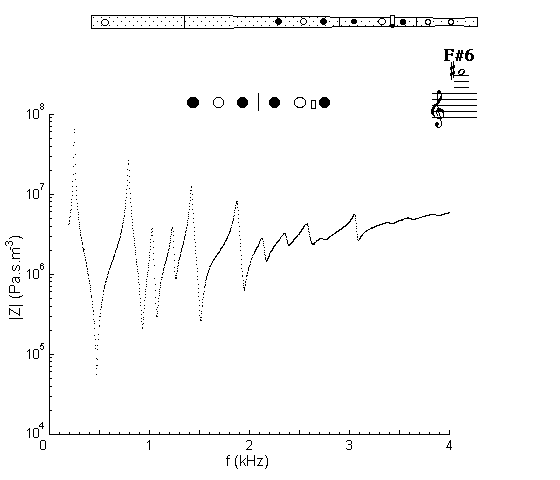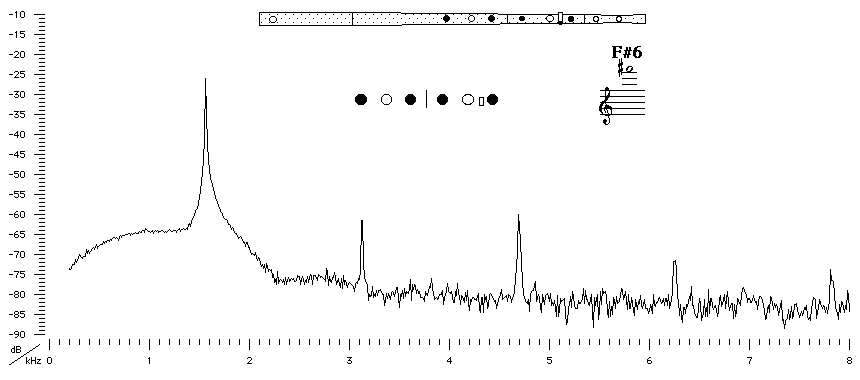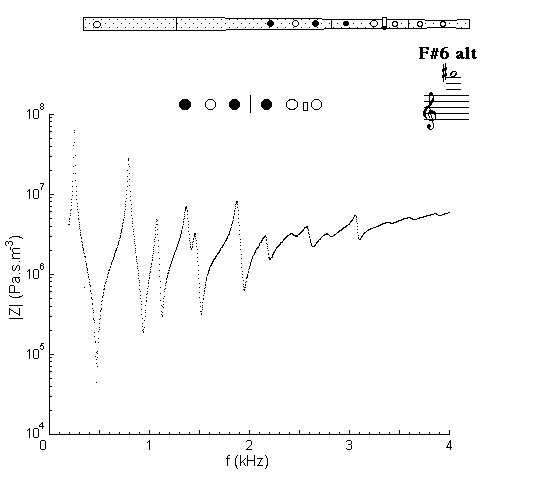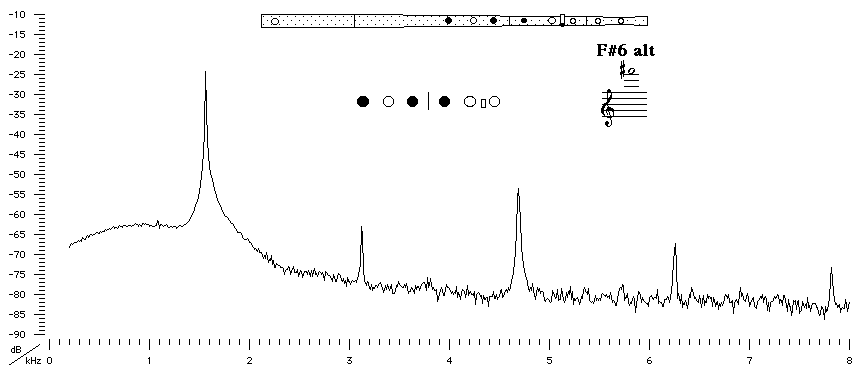| Acoustics of baroque, classical and modern flutes |
classical flute
|
F#6 |

|
Acoustic and Fingering Schematic Non-specialist introduction
to acoustic impedance |
It may be considered as the fingering used to play D4, but with two register holes that weaken and detune the first four minima, while leaving the fifth minimum unchanged. Thus a note is produced near the fifth harmonic of D4.
This fingering is out of tune - classical flutes intended to play in the third octave usually had extra keys, which allowed the designer more parameters to vary to maintain intonation over a wider range. In our study, the player was asked to play the fingerings 'where they were', rather than to tune them by varying the coverage of the embouchure hole. (The dimensions of the instrument are based on those of a large-hole Rudall and Rose flute: R & R #655 from the Bate Collection in Oxford.)

Sound spectrum
of a classical flute with a flared foot played using conventional
fingering for F#6.
![]()
![]()
![]()
![]()
![]() You can hear F#6
played with conventional fingering
by Geoffrey Collins.
You can hear F#6
played with conventional fingering
by Geoffrey Collins.
Alternative Fingering |
classical flute flared foot |

|
Acoustic and Fingering Schematic Non-specialist introduction
to acoustic impedance |
This fingering may be considered as F#4 with a register hole (LH 2nd finger). The fourth minimum produces F#6. This fingering is very sharp, which is why the fingering above has the RH 3rd finger as cross fingering.

Sound spectrum of a classical flute with a flared foot played using alternative
fingering for F#6.
![]()
![]()
![]()
![]()
![]() You can hear F#6
played with alternative fingering
by Geoffrey Collins.
You can hear F#6
played with alternative fingering
by Geoffrey Collins.
| Acoustic measurements are available for these flutes - modern B, modern C, classical C, classical D, classical flared, baroque Sound clips are available for modern B, classical flared and baroque |
To compare flutes, it is easiest to open a separate browser window for each instrument. |